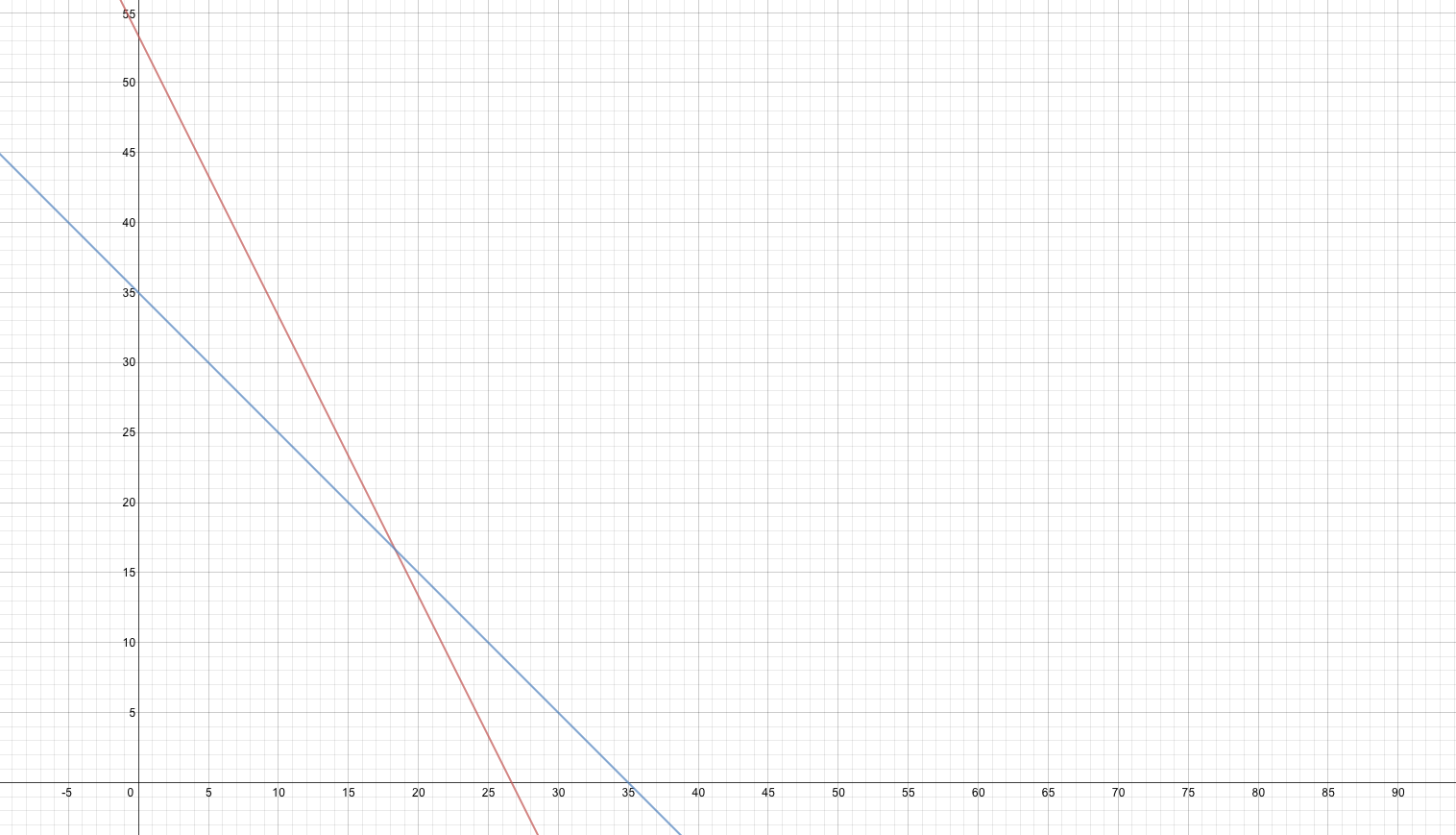If you assume that Double Stuf Oreos are doubly stuffed (which may turn out to be false), then using the Nutrition Facts labels, you can write the following system of equations, where x represents the number of calories in one wafer and y represents the number of calories in a single layer of stuf.
The first line represents the caloric content of a single serving (three cookies) of Regular Oreos; the second line represents the caloric content of a single serving (two cookies) of Double Stuf Oreos.
Getting to this system represents some effort on the part of me and my College Algebra students. They are wont to represent their work arithmetically; my job is to help them to transition this arithmetic problem solving to algebraic generality. It is work that I love, but it is hard work.
We had gotten ourselves there, and we had discussed the importance of being very clear about the meanings of our variables when I presented the following graph in class yesterday.

The basic questions in front of us were, What does the blue line represent? What does the red line represent? What is the meaning of this graph?
We had a number of false starts and hesitations. After a few minutes of this, a student pointed our attention to the slope of the red line.
Student: The slope is –2.
Me: Why is it negative?
Student: Because it goes down.
Student: Because if you count the squares over and the squares down, and write rise over run, it’s negative 2, which means the line goes down.
Me: Right. But what does that have to do with Oreos?
A few moments of contemplative silence from 44 college students.
Student: There are twice as many wafers as stufs in the regular Oreos, and the red line represents the regular Oreos.
Me: Right. But why negative?
A few more moments of contemplative silence from the group. This is not a routine they are familiar with, but they are working hard to acculturate themselves to these new expectations.
Me: OK. Let’s do this. Write your answer to this question in your notes.”What is the meaning of x on this graph?”
I allow a few moments for this to occur.
Me: Raise your hand if you wrote that “x represents wafers”.
About 80% of hands go up. I contemplate this. Then…
Student: Isn’t it “number of calories in one wafer”?
Now we have something to work with!






























